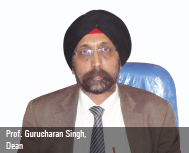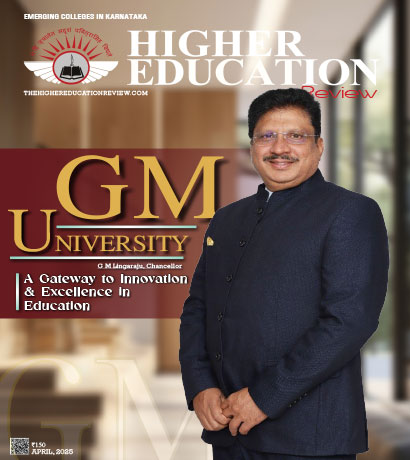Training Concepts for Engineering Students

Business and economy today, given the increasing competition and globalization, are going through immense changes and transformations. The recognition of talent as a source of competitive advantage is fundamental and Human Resource Development (development of engineering students in this case) is one of the most talked about subjects.
Organizations today want the right quantity and quality of talent at reasonable costs and more importantly to suffice the needs of growing business. Organizations are on the lookout for engineers who possess technical / functional competencies, competencies in terms of aptitude to undertake mission critical work and specialized personality traits. This can be done by bringing about the necessary changes in the present system of knowledge transfer, training and talent development and putting into place a well defined HRD system right from the first day the students enter the engineering institution.
The process of training comprises of various steps which include assessment of training needs, establishment of training goals, designing the training programs, implementation of the programs and finally evaluation of the effectiveness of the training programs. Various HR policies need to be put into place for the success of the training programs: Identifying the training needs of an institution is the first step in the systematic training process. All training needs should be related to the specific needs of the institution and its human resources. For the identification of training needs, the gap between the existing level of knowledge, skills, performance and aptitudes of the students and the required levels of the knowledge, skills performance and aptitude as required by the industry should be clearly identified and specified.
After deciding the training needs, the logical steps in the training process are to set training and objectives in concrete terms. Without clearly set objectives / goals, it is not possible to design well planned training programs which are to be executed and also evaluated for judging their effectiveness. The next step is to design the training program for which an appropriate training policy is absolutely essential. This policy represents the commitment of top management and rules and procedures relating to training activity.
The implementation of the training programs involves consideration on facilities required, location of the training, schedule, conduction, monitoring and evaluation of the same. It is desirable to have separate administrative machinery for the execution of training programs. Evaluation enables us to determine the results of the training programs. Regular assessments of students need to be done and the programs need to be evaluated and upgraded as per the requirements of the students and the industry.
Requirements / principles for training programs to be effective and successful
• Training should be exactly as per the training needs. The training needs should be identified clearly and precisely before deciding the details of training program.
• The training programs should be elaborate and systematic. They should be directly related to specific needs of the institution.
• Training programs should motivate trainees to take interest and initiative in the training process.
• Training should be of superior quality and be theoretical as well as practical in nature.
• There should be periodical tests and evaluation of the trainees. Feedback should be provided to the trainees at regular intervals.
• Training programs should be of a reasonably longer duration. They should not be too short or too long as both these extremes are undesirable.
• Experts with suitable qualifications, qualities, experience and maturity should provide training.
• Effective participation of trainees in the programs should be encouraged. Training should act as a tool for self-learning and self-development.
• Training programs should be reviewed periodically for updating the course content.
• The trainees should be motivated by issuing certificates and rewards to those who excel.
• The training programs should be conducted in class rooms / seminar halls / outdoor locations which are peaceful and have all the required facilities and conveniences to the trainer and trainees.
• The training programs should be monitored periodically and regularly.
• All stake holders of the institution should be taken into confidence during the design, implementation and evaluation of the training programs.
• A combined credit score for all semesters for each student should be prepared to make the programs effective.
• An effective and efficient training administration system should be put in place to achieve the desired results.
A careful integration of the training programs from the very first year of engineering is necessary, with ongoing input and feedback from faculties, staff, industry, HR Department and students. The training programs could comprise of communication skills, soft skills, aptitude skills and technical skills. The universities / engineering institutions should explore the concepts of integrating elements of employability / generic / soft skills in the teaching and learning activities in the curriculum.
Organizations today want the right quantity and quality of talent at reasonable costs and more importantly to suffice the needs of growing business. Organizations are on the lookout for engineers who possess technical / functional competencies, competencies in terms of aptitude to undertake mission critical work and specialized personality traits. This can be done by bringing about the necessary changes in the present system of knowledge transfer, training and talent development and putting into place a well defined HRD system right from the first day the students enter the engineering institution.
The process of training comprises of various steps which include assessment of training needs, establishment of training goals, designing the training programs, implementation of the programs and finally evaluation of the effectiveness of the training programs. Various HR policies need to be put into place for the success of the training programs: Identifying the training needs of an institution is the first step in the systematic training process. All training needs should be related to the specific needs of the institution and its human resources. For the identification of training needs, the gap between the existing level of knowledge, skills, performance and aptitudes of the students and the required levels of the knowledge, skills performance and aptitude as required by the industry should be clearly identified and specified.
After deciding the training needs, the logical steps in the training process are to set training and objectives in concrete terms. Without clearly set objectives / goals, it is not possible to design well planned training programs which are to be executed and also evaluated for judging their effectiveness. The next step is to design the training program for which an appropriate training policy is absolutely essential. This policy represents the commitment of top management and rules and procedures relating to training activity.
The implementation of the training programs involves consideration on facilities required, location of the training, schedule, conduction, monitoring and evaluation of the same. It is desirable to have separate administrative machinery for the execution of training programs. Evaluation enables us to determine the results of the training programs. Regular assessments of students need to be done and the programs need to be evaluated and upgraded as per the requirements of the students and the industry.
Requirements / principles for training programs to be effective and successful
• Training should be exactly as per the training needs. The training needs should be identified clearly and precisely before deciding the details of training program.
• The training programs should be elaborate and systematic. They should be directly related to specific needs of the institution.
• Training programs should motivate trainees to take interest and initiative in the training process.
• Training should be of superior quality and be theoretical as well as practical in nature.
• There should be periodical tests and evaluation of the trainees. Feedback should be provided to the trainees at regular intervals.
• Training programs should be of a reasonably longer duration. They should not be too short or too long as both these extremes are undesirable.
• Experts with suitable qualifications, qualities, experience and maturity should provide training.
• Effective participation of trainees in the programs should be encouraged. Training should act as a tool for self-learning and self-development.
• Training programs should be reviewed periodically for updating the course content.
• The trainees should be motivated by issuing certificates and rewards to those who excel.
• The training programs should be conducted in class rooms / seminar halls / outdoor locations which are peaceful and have all the required facilities and conveniences to the trainer and trainees.
• The training programs should be monitored periodically and regularly.
• All stake holders of the institution should be taken into confidence during the design, implementation and evaluation of the training programs.
• A combined credit score for all semesters for each student should be prepared to make the programs effective.
• An effective and efficient training administration system should be put in place to achieve the desired results.
A careful integration of the training programs from the very first year of engineering is necessary, with ongoing input and feedback from faculties, staff, industry, HR Department and students. The training programs could comprise of communication skills, soft skills, aptitude skills and technical skills. The universities / engineering institutions should explore the concepts of integrating elements of employability / generic / soft skills in the teaching and learning activities in the curriculum.

